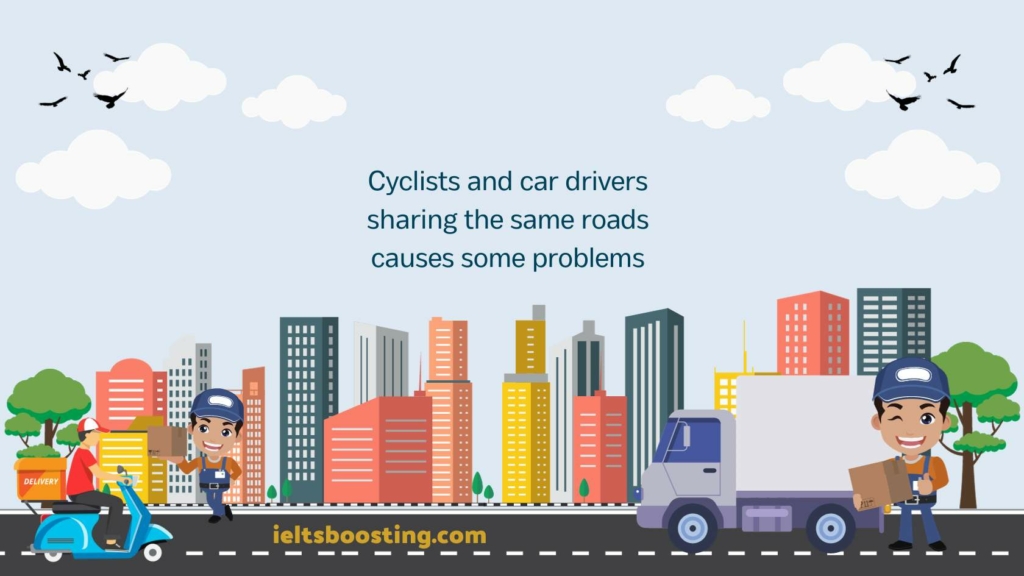Cyclists and car drivers sharing the same roads causes some problems. What are the problems and what can be done to reduce them?
Allowing both bicycles and cars to use the same travel routes can lead to significant issues. These include an increased likelihood of accidents and reduced car efficiency due to traffic congestion. In my opinion, implementing dedicated cycling lanes could be one potential solution for these problems.
One of the main problems is the increased risk of accidents. Cars, designed for speed and power, often find it challenging to navigate safely around cyclists who are more vulnerable due to their lack of protective covering and slower speeds. This disparity in speed and protection makes shared roads hazardous, especially in areas lacking proper cycling lanes. Another significant issue is traffic congestion. In crowded urban areas, adding cyclists to roads already filled with cars can worsen traffic congestion. In fact, cyclists moving at a slower pace can hinder the flow of traffic, causing longer commutes and driver frustration.
To address these problems, the implementation of dedicated cycling lanes is crucial. These lanes would provide a safe space for cyclists, reducing the likelihood of accidents. They should be clearly marked and, where possible, physically separated from car lanes by barriers. This separation would not only protect cyclists but also give car drivers a clearer and unobstructed path, potentially easing traffic congestion. For instance, dedicated cycling lanes in developed countries like Japan and Singapore have proven effective in reducing accidents and improving traffic flow.
In conclusion, while the sharing of roads by cyclists and car drivers presents challenges such as increased accident risk and traffic congestion, the solution of dedicated cycling lanes and can significantly alleviate these issues. Implementing these measures would ensure a safer, more efficient coexistence of different modes of transportation on our roads.
Explore more: forecast speaking quy 3 2023

Cyclists and car drivers sharing the same roads causes some problems
Good lexical resource
- Increased likelihood: Indicates a higher probability or chance of something occurring, in this case, accidents.
- Traffic congestion: A term used to describe overcrowded road conditions, typically resulting in slow-moving or stalled traffic.
- Dedicated cycling lanes: Special lanes designated solely for the use of cyclists, separating them from other vehicular traffic.
- Navigate safely: Refers to the ability to move or direct a vehicle skillfully and safely through a particular area or obstacle.
- Disparity in speed and protection: Indicates a significant difference or inequality in the speed capabilities and protective measures between cars and bicycles.
- Hazardous: Describes something that is dangerous or poses a risk, particularly in the context of road safety.
- Physically separated: Refers to the creation of a distinct physical barrier or division, enhancing safety and organization.
- Unobstructed path: A clear, free-from-obstacles route, allowing smooth and safe travel.
- Easing traffic congestion: The act of reducing or alleviating the severity of overcrowded road conditions.
- Coexistence: The ability to exist together simultaneously and peacefully, in this case referring to different modes of transportation.
- Alleviate: To make something, such as a problem or a symptom, less severe or more bearable.
Cyclists and car drivers sharing the same roads causes some problems


